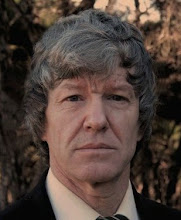A groundbreaking study led by University of Miami (UM) scientist Shimon Wdowinski shows that earthquakes, including the recent 2010 ones in Haiti and Taiwan, may be triggered by tropical cyclones (hurricanes and typhoons).
'Very wet rain events are the trigger,' says Wdowinski, associate research professor of marine geology and geophysics at the UM Rosenstiel School of Marine and Atmospheric Science. 'The heavy rain induces thousands of landslides and severe erosion, which removes ground material from the Earth's surface, releasing the stress load and encouraging movement along faults.'
Wdowinski and a colleague from Florida International University analyzed data from quakes magnitude-6 and above in Taiwan and Haiti and found a strong temporal relationship between the two natural hazards, where large earthquakes occurred within four years after a very wet tropical cyclone season.
Which means that because global overheating will increase the number of tropical cyclones, bringing more heavy rain, we can also expect an increase in the number of significant earthquakes.
Full report in <a href="http://www.sciencedaily.com/releases/2011/12/111208121016.htm">ScienceDaily.</a>





